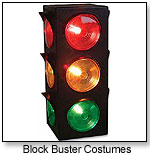
January 1, 2026


 Buying signals are all around us. We just have to learn to recognize them. They’re very much like a traffic light — red, yellow and green signals to stop, proceed with caution, or continue.
Buying signals are all around us. We just have to learn to recognize them. They’re very much like a traffic light — red, yellow and green signals to stop, proceed with caution, or continue.|
Exhibitors’ Tool Kit
1. Take copious notes. Understand your customer’s world. Take the time to get to know them. Help each one do an honest needs analysis.2. Be flexible in your presentation. Resist, at all costs, the temptation to treat all customers the same. 3. Never overlook clear buying signals. Many sales cycles die here. If the customer is not ready to buy now, an extended presentation is self defeating. 4. Use summary statements to highlight areas in which you agree. Always let prospects know that you understand where they’re coming from. Establishing common ground is essential to consultative sales success. 5. Carefully detect the difference between buying signals and closing signals. 6. Watch carefully for nonverbal signals at all times. All too often, this language speaks much louder than words. |
 A buying signal says, “Continue to lay forth the reasons I should invest in this offering.” Keep building your case, as if the prospect were a jury, as to how you stack up versus the rest of the pack in your product/service category.
A buying signal says, “Continue to lay forth the reasons I should invest in this offering.” Keep building your case, as if the prospect were a jury, as to how you stack up versus the rest of the pack in your product/service category.
Copyright © 2026 TDmonthly®, a division of TOYDIRECTORY.com®,
Inc.